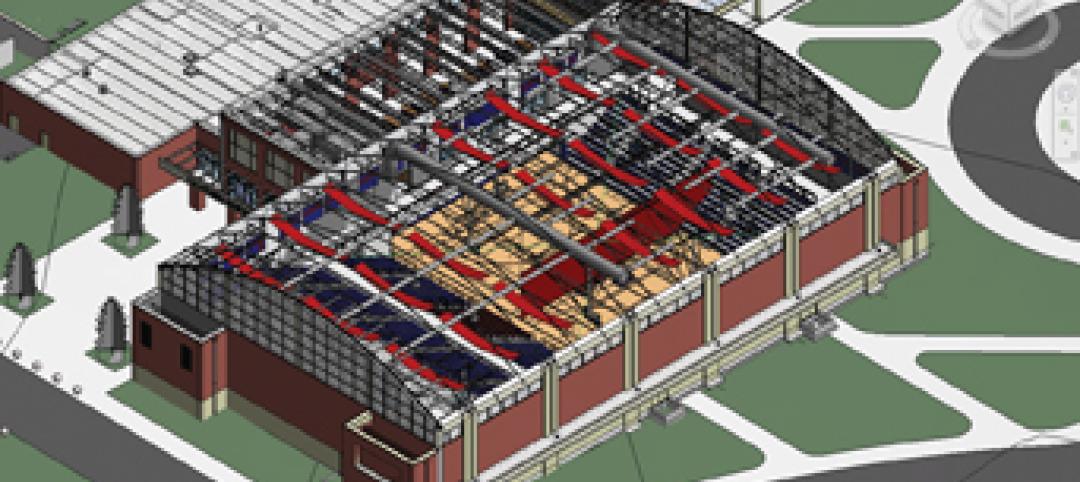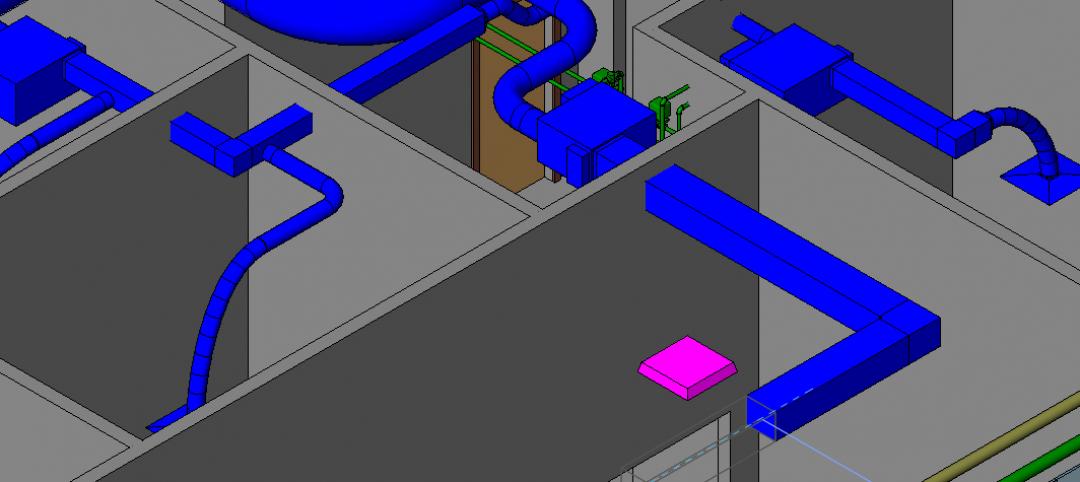Two innovations—program manager Gafcon’s SharePoint360 project management platform and a new BIM “wall creator” add-on developed by ClarkDietrich Building Systems for use with the Revit BIM platform and construction consultant—show how fabricators and owner’s reps are stepping in to fill the gaps between construction and design that can typically be exposed by working with a 3D model.
WEB BIM MANAGEMENT: SAVING TIME AND MONEY
Gafcon manages some of the biggest construction projects in Southern California as an owner’s representative and construction consultant. “Very significant time and money can be saved by combining cost, schedule, inspections, drawings, and financial information in one system accessed through a Web portal,” said CEO Yehudi “Gaf” Gaffen. “We found that a lot of contractors and design firms are involved in part of the building process to make their own delivery efficient, but there really wasn’t a tool devoted to the entire process, from design to construction.”
ALSO SEE: The world’s first building made from carbon-fiber reinforced concrete starts construction in Germany
In 2006 Gafcon created a sister company, SharePoint360, based in San Diego. Utilizing Microsoft’s SharePoint Web collaboration platform (with significant customization for building owner and construction company clients), SharePoint360 provides a portal to tie together all the AEC software used on a project. Industry-specific applications such as Expedition program management software from Primavera Systems can integrate data with SharePoint360, making that information available to all team members within a SharePoint site without purchasing additional licenses. Using SharePoint360’s model viewer, all Building Team members can view a Revit model no matter what stage of design or construction the project is in.
“We created an interface with Revit that enables owners and facilities managers to get the necessary data from Revit models for their needs and purposes without needing a Revit license,” Gaffen said. “Building engineers in the field can access the model (through the Mobilize360 mobile app) and navigate through it in the field to isolate problems using GPS coordinates. You can pull all documentation (including model and shop drawings), view it from the field, and mark it up in a tablet PC and automatically transfer that information back to the rest of your team.”
Because SharePoint360 is not a proprietary platform, any individual building project’s SharePoint website can be customized for that particular project’s needs. Most of the hosted sites that the company runs are turned over to building owners and facility managers after construction is completed, providing the owner with a record for later use in operations and maintenance.
“The knowledge of using SharePoint’s engine to drive specific applications is the intellectual property we have related to AEC,” Gaffen said. The contracts stipulate that the hosted sites can be transferred to another hosted platform.
SharePoint was the program management tool used for the renovation and expansion of three community colleges and six continuing education campuses in the San Diego Community College District, a $1.5 billion construction program that began in 2007. Using SharePoint360 reduced the number of software licenses necessary for the project by hundreds.
SharePoint360’s AEC industry-specific services include an NSPEC inspection module, intranet and extranets for building projects that offer real-time access to information from any location. The resulting business data allows Gafcon and its clients to track and report on important project information, including billable hours and employee progress. By analyzing this data project managers can run tighter ships as well as collaborate better.
Because SharePoint360 is not a proprietary platform, said Gaffen, “You’re not held hostage by one software vendor. The platform is agnostic and can tie into any line of business.”
REVIT ADD-ON AUTOMATES WALL CREATION
ClarkDietrich Building Systems, headquartered in West Chester, Ohio, is the largest manufacturer of cold-formed steel framing in the U.S. They also produce structural studs and joists, metal lath and accessories, and shaft wall studs and track. While the company maintains it can provide any cold-formed steel frame design necessary for commercial and residential construction, it kept running into problems with projects modeled in Revit, with information in a 3D model, that either wasn’t used properly, conflicted with itself, or had specifications made during construction.
“Everyone is making custom shapes and it’s all test-based,” based on STC or UL/fire rating, said Robert Warr, PE, director of engineering services at ClarkDietrich. “Small things like adding insulation or adding resilient channels can change your whole framing system profile.” Warr says his group talked to “some of the bigger architecture firms” and came away with the understanding that they wanted to put a high level of detail in their wall objects but needed an easier tool to work with than was currently available.
There are hundreds of different wall types being used in steel framing today; the ones that do have 3D BIM objects, ones that can be dropped into a model during design, were created by architects and BIM managers whose job it is to maintain Revit libraries for their entire firms. Consequently, accuracy across several projects was not always a priority. Warr and his team came up with a BIM Wall Creator add-on for Revit that’s database-driven and asks designers questions up front before construction, to eliminate a lot of what used to be a gray area.
“Information often doesn’t match between an STC rating and a fire rating,” Warr said. The new tool “gives architect an accurate picture for both ratings,” he says.
BIM Wall Creator allows you to specify if you want to design a wall for limiting height, an STC rating, a UL rating, a LEED specification, or some combination of these factors. The wall is then built inside Revit by the add-on as a new object. All information about wall height, STC rating, UL rating, and LEED is saved into the model for use downstream by fabricators and contractors.
The Wall Creator is a free add-on for Revit and has a link to the fabricator’s product submittal system. ClarkDietrich is developing additional features, such as shaft wall framing, for 2012 release. BD+C
Related Stories
| May 16, 2011
Dassault Systèmes to distribute Gehry Technologies’ digital project
Dassault Systèmes and Gehry Technologies announced that Gehry Technologies’ Digital Project products will be integrated into the Dassault Systèmes’ portfolio and distributed through Dassault Systèmes. Digital Project is a suite of 3D BIM applications created by Gehry Technologies using Dassault Systèmes’ CATIA as a core modeling engine.
| May 3, 2011
Scott Simpson of KlingStubbins on how to get more value from BIM
Too few AEC professionals have developed a strategic idea of how BIM can and should re-shape professional practices and drive dramatic improvements in both creativity and production, according to Scott Simpson, FAIA, senior director of KlingStubbins. While BIM enables the exploration of design ideas quickly and in new and different ways, it can lead people to think they’re making more progress than they actually are. A simple adjustment in perspective is all it takes to put things right.
| May 2, 2011
URS acquires Apptis Holdings, a federal IT service provider
SAN FRANCISCO, CA and CHANTILLY, VA– April 28, 2011 – URS Corporation and Apptis Holdings, Inc., a leading provider of information technology and communications services to the federal government, announced that they have signed a definitive agreement under which URS will acquire Apptis.
| Apr 12, 2011
BIM Grows Up: Separating Hype from Reality in a 3D World
While BIM adoption still lags in both design and construction, some enterprising owners, architects, and contractors are unlocking the potential of this dynamic technology.
| Apr 5, 2011
Are architects falling behind on BIM?
A study by the National Building Specification arm of RIBA Enterprises showed that 43% of architects and others in the industry had still not heard of BIM, let alone started using it. It also found that of the 13% of respondents who were using BIM only a third thought they would be using it for most of their projects in a year’s time.










